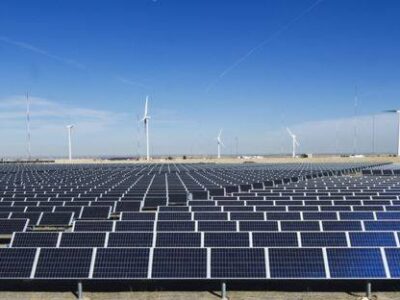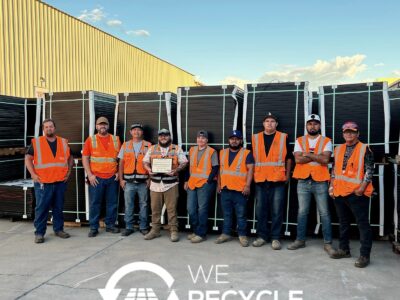(Bloomberg) —
In a landmark step for enhanced geothermal technology’s potential as a dependable carbon-free energy source, startup Fervo Energy has completed a performance demonstration of its commercial pilot.
The Houston-based company wrapped up a full-scale, 30-day well test at its Project Red site in northern Nevada, which was able to generate 3.5 megawatts of electricity, according to a company statement. (One megawatt can power roughly 750 homes at once.) Project Red will connect to the grid later this year and power Google’s data centers and infrastructure throughout Nevada. It’s a part of the corporate agreement between the startup and Alphabet Inc.’s Google to develop enhanced geothermal systems.
Geothermal power plants are carbon-free and can operate any time, making them a critical part of a 100% carbon-free electric grid. Enhanced geothermal systems (EGS), like Fervo’s, expand the range of sites able to be tapped for geothermal energy. Doing so has long been a goal for the renewable energy industry. Since the 1970s, scientists have been attempting EGS, and this is the first time that any company has shown it can be done on this kind of commercial scale.
“The significance of what we’ve done today is show that that technology actually will work a decade-plus ahead of where people thought we were on the tech roadmap,” chief executive officer and co-founder Tim Latimer said. “It’s not a ‘mid-century’ resource; it’s a ‘today’ resource.”
With the demo complete, Fervo is attempting to repeat its success at its southwest Utah site, which is currently under construction, according to Latimer.
If results are consistent, with design improvements maximizing power output as expected, the Utah site is predicted to deliver about 400 megawatts by 2028, he said. That would be roughly enough electricity to power 300,000 homes at once. Fervo is also beginning permitting and appraisal work on half a dozen other sites across the western US.
Natural geothermal systems require heat, fluid and rock permeability to generate electricity. In many regions, the existing rock is hot enough but there isn’t enough permeability for fluid to flow through the hot rock. Through wells drilled deep underground, EGS injects fluid to create fractures, causing the permeability needed for electricity generation.
“That’s the beauty of the enhanced geothermal system,” said Joseph Moore, managing principal investigator of the Department of Energy’s Frontier Observatory for Research in Geothermal Energy (FORGE) project. “Any place that you wanted to drill a well, you could find temperatures high enough for what you want to do.”
Geothermal could play a key role in a decarbonized grid, providing power at times when traditional renewables like wind and solar aren’t available. As more states like California start implementing legislation pushing towards a 100% carbon-free electricity supply, as well as calling for more grid reliability, clean firm power — or power that is carbon-free and available around the clock — is going to be even more critical. Anywhere from 10% to 20% of the grid will need to be powered by these types of sources to keep costs down, according to Wilson Ricks, a PhD candidate at Princeton University and member of the Zero-carbon Energy Systems Research and Optimization Laboratory (ZERO) lab.
Ricks authored a paper with Fervo chief technology officer and co-founder Jack Norbeck and others that examined the potential for EGS well fields to operate flexibly, effectively a form of long-duration energy storage.
“If EGS can be successfully proven out at scale, if the flexible operating mode can be similarly validated, the role that it would play would be a Swiss army knife complement to wind and solar power,” Ricks said.
Remaining challenges to EGS scaling include bringing costs down as well as regulatory hurdles. Permitting delays, as well as grid and transmission challenges, are causing a bottleneck in renewable energy growth across the country, according to Latimer. On the costs front, in 2022, Energy Secretary Jennifer Granholm announced the Enhanced Geothermal Shot, a target to reduce the cost of EGS by 90% to $45 per megawatt hour by 2035. Fervo’s costs for the Nevada project are “significantly higher” than that target, Latimer said, in part because it’s a first-of-a-kind project, but he said he expects next year’s EGS cost forecast to “decline rapidly.”
To contact the author of this story:
Michelle Ma in Los Angeles at mma304@bloomberg.net
© 2023 Bloomberg L.P.





